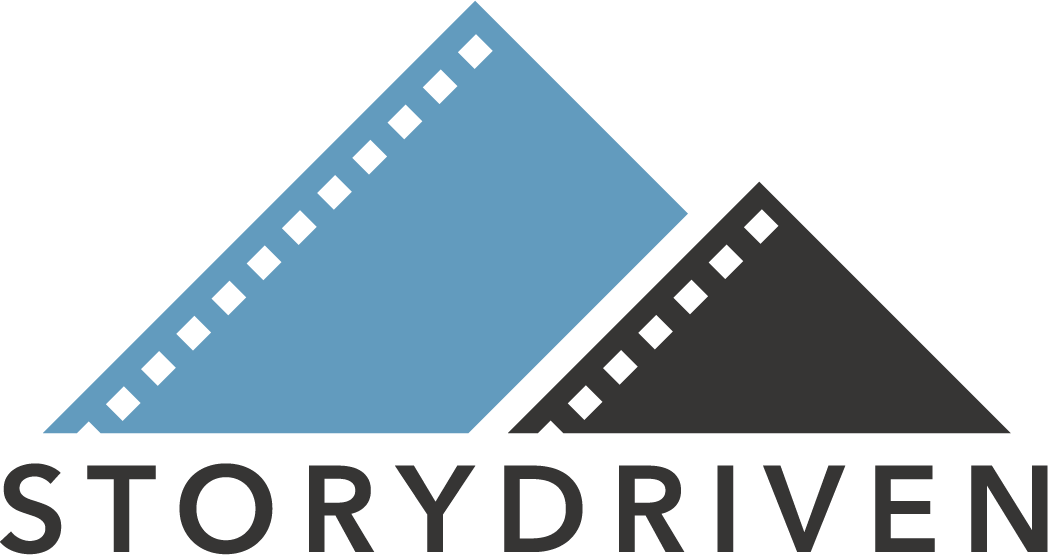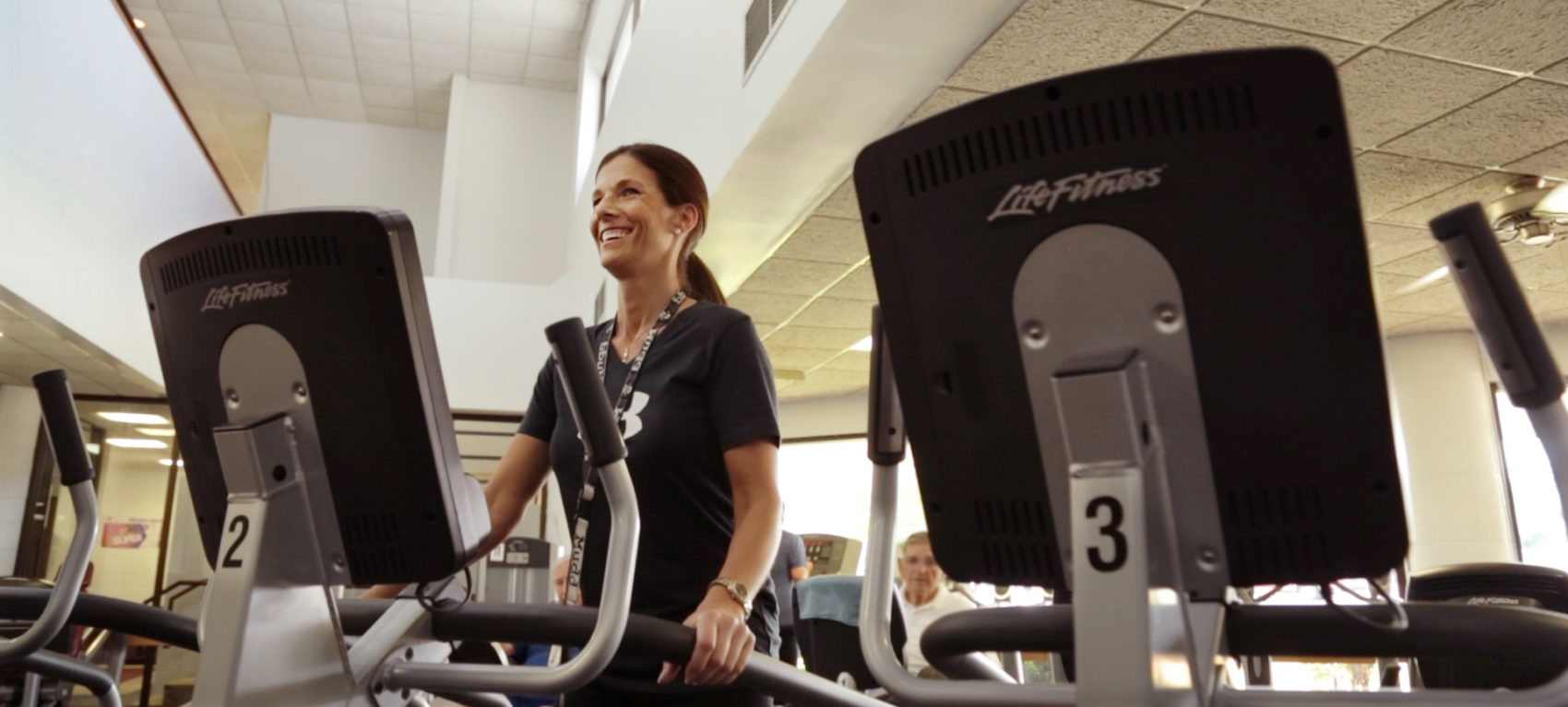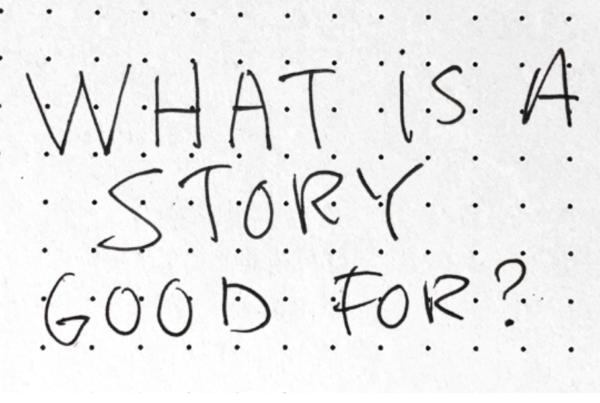When I first phoned story subject Elizabeth Davis to begin scheduling shoot dates, I could sense hesitancy. She asked if we could film at the Y on a less crowded day. At one point, I wasn’t sure she’d be open to filming at the Y at all. Probably because cameras would be involved, I figured.
While Elizabeth had shared her story publicly before—with Cosmopolitan Magazine, in fact —we were the first to tell her story visually. We were the first to film her walking and the first to film her inside the privacy of her home.
To tell and share stories like Elizabeth Davis’ is what StoryDriven is all about. Honestly, hers is one of the most amazing we’ve ever told: a modern-day miracle made possible by the UNC School of Medicine, a client we are proud to serve.
Healing is a deeply intimate and personal journey. In order for Elizabeth to allow us into her world, we had to earn the right to tell her story. Here was a woman who had essentially lived shut-in for much of her life, her world beginning to open up, vulnerably sharing her story, with cameras rolling…
LIMITED
Elizabeth spent 30 years walking on her toes. “For 30 years, I was limited. I could never do things myself,” she told us. At the young age of 6, out of nowhere, pain shot through her toes. Stubbornly, her toes stayed curled under. Unable to walk with her feet flat on the ground, Elizabeth resorted to walking on her tip-toes everywhere, and as a result, her knees knocked together.
Shame accompanied Elizabeth. By middle school, her condition having worsened, she was using crutches. “I remember kids making fun of me.” Bullied, she eventually quit school and stayed home. Self-conscious about walking on crutches, she hid from the world. She hid at home. She hid in the car, as someone else grocery shopped and ran errands for her. “Through seventh grade til I was 20, I didn’t go places a lot,” she said. “I didn’t have a life.”
For years, the cause of her condition remained a mystery. “I started going to different doctors, trying to find out what it was,” Elizabeth explained. Physicians near her hometown of Goldsboro, NC, couldn’t explain the cause of her condition. That didn’t stop them from trying to relieve her symptoms, but each time there was a misdiagnosis. By the time she was 14, she’d undergone three surgeries.
By the time Elizabeth was 36, she’d endured ten total surgeries: five on one foot, five on the other. Doctors from Duke, the Mayo Clinic and UNC-Chapel Hill had conducted lifetimes’ worth of tests: multiple MRIs, nerve and muscle testing, a spinal tap. None led to a definitive diagnosis. Rather, misdiagnoses like hereditary spastic paraplegia and cerebral palsy were offered. All the doctors agreed—there was nothing they could do.
As Elizabeth continued her search for answers, walking grew more and more painful. “I was always in pain,” she admits. “But some weeks were really, really bad—to the point where I couldn’t even move.”
As if daily pain and the discouragement of a diagnostic odyssey wasn’t enough, Elizabeth continued to be self-conscious about her crippling condition. Her eldest son was ashamed of her for having to walk on crutches and didn’t even want her to be seen at his school. She finally succumbed to the assistance of a wheelchair. “I hated it so much. I barely went anywhere.”
BREAKTHROUGH
Elizabeth persisted. “I wanted to get better. I wanted to do things,” she told us. “I wanted to live a life.”
Elizabeth’s diagnostic journey led her to Dr. Jane Fan, a neurologist at UNC-Chapel Hill with training in genetics. Something about Elizabeth Davis’ condition wasn’t adding up. Dr. Fan referred Elizabeth to a colleague at Chapel Hill, geneticist Dr. James Evans, who was in charge of a four-year, $6.4-million study called NCGENES (North Carolina Clinical Genomic Evaluation by NextGen Exome Sequencing). NCGENES enrolls patients with mysterious conditions and examines all of a person’s genes.
“In genetics, we’re used to seeing people who have been to doctor after doctor, year after year, and not getting a diagnosis. That’s the diagnostic odyssey,” explained Dr. Evans. “What we’re investigating is how we can use [gene sequencing] as a diagnostic tool, how we can use it in patient care.”
“I was scared, you know, to have my genetics tested,” Elizabeth admitted. She was afraid the tests might reveal something even worse than her current suffering.
Four tubes of blood, 100,000 possible genetic locations, and just over six months later—breakthrough. Through the use of powerful computing, Dr. Evans and colleagues sequenced Elizabeth’s DNA and narrowed the possibilities down to a single mutation in a gene called GTPCH1. That mutation impairs the body’s ability to produce a chemical called dopa, an amino acid crucial for nervous system function. Finally, a diagnosis: dopa-responsive dystonia.
“What made it particularly exciting,” Dr. Evans said, “is that the disorder implied an effective treatment. We called Dr. Fan and said we should put her on dopa.”
Dopa, a pill that has been on the market since 1988 and used to treat patients with Parkinson’s disease, was all that Elizabeth would need. No surgeries, no more answers of “there is nothing we can do.” Just a simple pill!
And with that, Elizabeth’s life was profoundly changed forever.
NEW LIFE
“By the time I started taking my pill,” explained Elizabeth, “it was three days later when I felt my toes move.” Indeed, just three days after she took one-quarter of a pill, Elizabeth’s toes stretched out while standing in the middle of a Verizon Wireless store in Goldsboro. “I’ll never forget it.”
In six weeks, she went from using two crutches, to one crutch, to a cane, to nothing. Walking, with a slight limp, but fully unsupported for the first time since she was 6 years old.
“I swear, six week later, she comes back to our clinic—and she’s left her crutches at home,” exclaimed Dr. Evans, beaming. “She’s walking. It was awesome!”
“I overheard my oldest son telling his friend that ‘My mama’s off crutches now,’” Elizabeth proudly shared. “I’ll never forget him saying that.”
PRODUCTION
Every time I spoke with Elizabeth I couldn’t help but reiterate what a privilege it was to tell her story, that her story was amazing, that we were honored to tell it. What a miraculous story to tell!
The day of our shoot in Mt. Olive/Goldsboro, our approach to continue to build trust with Elizabeth was to film b-roll with her first: film her around town, pumping gas, perhaps at the YMCA. Our goal here was for her to feel at ease and comfortable with us before diving into an emotional interview.
Inadvertently, between b-roll scenes, she would begin to tell us her story. To preserve the emotional integrity and authenticity of her sharing, we needed her to save her deeper reflections for the official on-camera interview!
At her home, we assured her we wanted to film as is, that her home need not be picture perfect. She confessed she hated the chair on which she sat when we filmed her putting on her shoes. It was the chair she had spent much of her adult life sitting on, shut-in. Jokingly, Nathan offered to take the chair out to the driveway and burn it. With this remark, Elizabeth knew we were on her side. Though vulnerable about how hard it all was, she opened up to us. Elizabeth allowed us into the pain, into the bullying, into the physical suffering, into the frustration of a diagnostic journey of misdiagnoses and confusion.
It was in the act of giving the interview that she trusted us, that she trusted the camera, and that she owned the pain of her story and the triumph of her story.
The final day of production, when we filmed at the Genetic Medicine Building on UNC’s campus was an emotional one. She has seen Dr. Evans on occasion since her initial cure, but she had never visited the building where the actual research had been done. She had never met the scientists in the lab or seen where the discovery that changed her life was made, and they had never met her. It was a powerful experience for the NCGENES researchers to meet Elizabeth. Up until that point, to them, she had simply been a patient code on four vials of blood. As for Elizabeth…she stood in the hallway of the Genetic Medicine Building crying, overcome with emotion that this was where her life was forever changed—in a lab at UNC.
FROM HESITANCY TO CONFIDENCE
In telling Elizabeth’s story— from the chair in her house to the emotional day at the lab—we got to see her world open up.
Today, Elizabeth Davis goes everywhere by herself. She handles all the housekeeping and errands. She takes yoga and spin classes and regularly works out at the Y. She has walked a 5k. She’s able to travel to places she would have had great difficulty managing, like New York City, and she’s been able to share this with her boys. Truly, her world has gotten bigger. She’s even given a few other on-camera interviews, most recently with WRAL, since the time StoryDriven had the privilege of working with her.
It was indeed a privilege to capture Elizabeth Davis’ story. As a result, we were ones left inspired and personally impacted. Not only do we now get to share with the world the amazing story of scientific research dramatically transforming the life of one North Carolinian, but in the process, we learned a lot about how to navigate a relationship with someone whose life had been defined by shame. She’s the hero of this story, and it was an honor to serve her in the telling of her dramatic recovery.
And she was impacted by working with us, too. In the process of garnering trust with her—affirming her worth as a human being with a powerful story to tell—and capturing her story, we helped Elizabeth realize what an inspiring story she had. She went from hesitant, a byproduct of low self-esteem, to empowered. Empowered to be proud of her story. Confident that hers is a remarkable story to tell. The best part: this confidence can be seen in her stride!
As with every story subject we work with, we are so grateful that Elizabeth Davis trusted us with her story and has allowed us to share it with the world.





